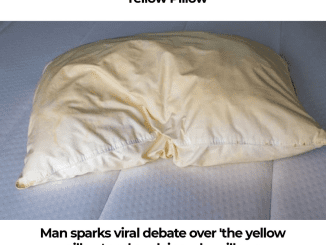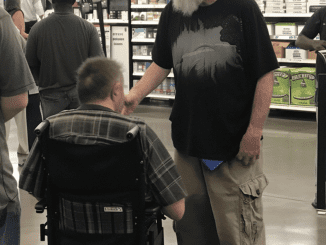If you’re a frequent flyer, you may already know that airplane bathrooms are not the cleanest spaces. But did you know that there’s one item in those cramped lavatories you should absolutely avoid? According to flight attendant insights shared on social media, using the toilet paper on an airplane might expose you to more germs than you realize. Here’s a breakdown of why you should think twice before grabbing that toilet paper roll and what other surprising hygiene tips flight attendants recommend.
The Truth About Airplane Toilet Paper: Why It’s a Germ Magnet
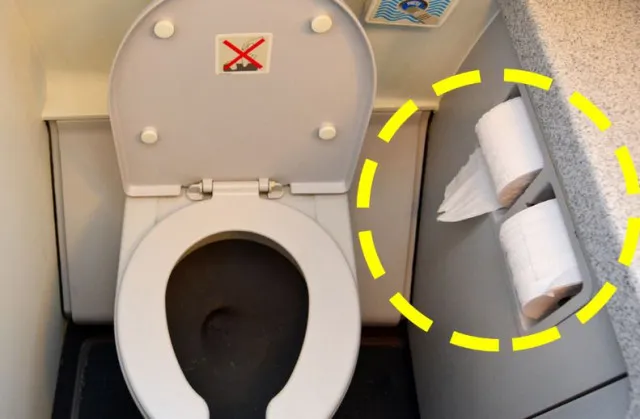
Recently, a flight attendant named Kate went viral on TikTok after warning viewers about a little-known hygiene hazard on airplanes: the toilet paper. In her candid video, she explained that men’s “pee-pee” often lands on the toilet paper due to cramped spaces and turbulence, making it a potential germ hotspot. The small size of airplane bathrooms and limited cleaning schedules only add to the issue, creating a less-than-sterile environment for toilet paper.
Kate’s light-hearted tone carried a serious message: if you want to stay as hygienic as possible on a plane, it’s best to avoid direct contact with toilet paper. Instead, she suggests bringing your own tissues or wipes, which are less likely to be contaminated.
What Else Is Contaminated? The Dirtiest Surfaces on an Airplane
While the toilet paper issue is shocking enough, it’s not the only part of the airplane where germs love to linger. Another flight attendant, Cher, who has been in the industry for over five years, provided insights into the dirtiest surfaces on a plane. According to her, several areas often go neglected between flights, which means they’re hotspots for bacteria and grime.
Some of the worst offenders include:
- Window Shades: These are frequently touched but rarely cleaned, making them a breeding ground for germs.
- Seat Belt Buckles: Almost every passenger handles their seat belt multiple times during a flight, yet these buckles are rarely sanitized.
- Tray Tables: Used for eating, working, and resting, tray tables are prime areas for bacterial buildup.
- Overhead Bin Handles: Hundreds of hands touch these handles, transferring a variety of germs with each use.
Why Airplane Bathrooms Are Challenging to Keep Clean
@blessedbybruski Flushing toilet paper💀#airplane #toiletpaper #fyp ♬ original sound – *
Airplane bathrooms present unique hygiene challenges, from cramped spaces to high usage. With multiple passengers using the lavatory during a single flight, maintaining a clean environment is nearly impossible. Flight attendants can only clean these areas periodically, typically with quick surface wipes rather than deep cleaning. Thus, the chance of picking up bacteria from these surfaces, including the toilet paper, is higher than many realize.
Kate’s video also highlighted the difficulty of keeping the floor clean in airplane bathrooms. She advised against walking in barefoot, stressing that there’s often “pee-pee on the ground, everywhere.” Wearing shoes at all times is the best way to avoid direct contact with contaminated surfaces.
Alternative Hygiene Tips for Airplane Travel
To keep your in-flight experience as sanitary as possible, here are some recommendations that frequent flyers might find helpful:
- Bring Your Own Tissues or Wipes: Pack a small supply of tissues or sanitizing wipes. These can serve as a safer alternative to the onboard toilet paper and are easy to carry in your personal bag.
- Keep Shoes On at All Times: Avoid going barefoot, especially in the bathroom. While this might seem obvious to some, many people take off their shoes mid-flight for comfort, unaware of the unsanitary floor conditions.
- Use Hand Sanitizer Frequently: After touching commonly used surfaces like tray tables, seat belts, and window shades, use hand sanitizer. This habit can reduce your exposure to germs.
- Disinfect Your Tray Table: Bring disinfectant wipes to clean your tray table before using it. Given its high usage and limited cleaning, it’s best to sanitize the surface yourself.
- Limit Touching Your Face: Planes are full of germs, so avoid touching your face, especially after handling public surfaces. Keeping your hands away from your mouth, nose, and eyes can reduce your chances of catching germs.
Passenger Reactions: Shock and Amusement
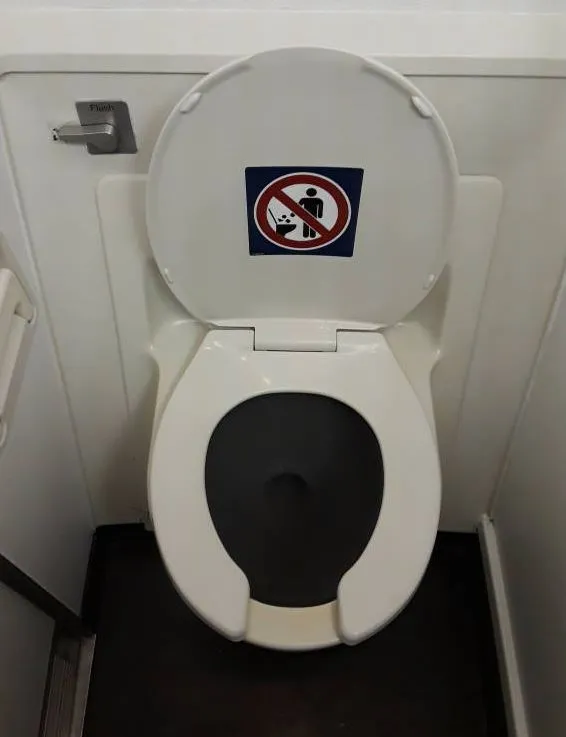
Kate’s video sparked a mix of shock, humor, and disgust among viewers, as many were surprised to learn about the hidden hygiene risks on flights. Comments ranged from jokes about “never using toilet paper again” to recommendations for bringing your own paper towels. Others shared their own habits, like carrying hand wipes or using gloves in airplane bathrooms, while some expressed shock, having used airplane toilet paper for years without realizing the potential contamination risk.
While some responses were lighthearted, many were genuinely taken aback by the uncleanliness in airplane bathrooms. The post highlighted how vital it is to be mindful of sanitation when flying, especially for those who travel frequently.
More Hygiene Tips from Flight Attendant Kate
Besides the toilet paper warning, Kate shared some additional in-flight etiquette and hygiene tips for travelers:
- Avoid Using the Galley as a Lounge: Passengers often congregate in the flight attendants’ galley for stretching or conversation. However, Kate encourages passengers to respect the space, as it’s a working area and needs to remain accessible to the crew.
- Be Kind to Families with Babies: Kate asked passengers to be patient with parents handling fussy babies on flights. Traveling with infants is challenging, and a little kindness goes a long way.
- Practice Personal Space: Lastly, Kate reminded travelers to respect others’ space and avoid actions like elbowing their seat neighbors, which can lead to unnecessary conflict.
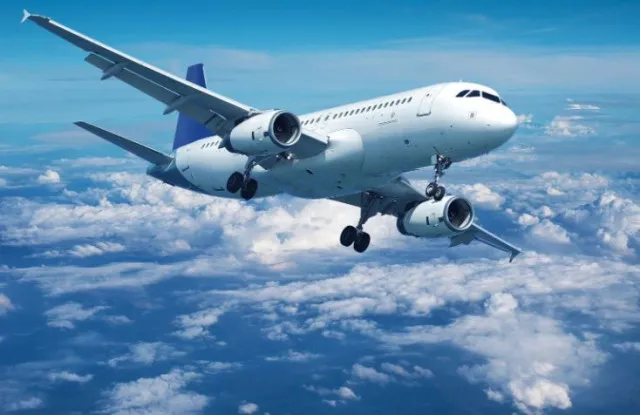
These tips, while seemingly minor, can contribute to a more pleasant and hygienic flight experience for everyone on board.
Why This Hygiene Awareness Matters
Airplanes are high-traffic environments with minimal opportunities for thorough cleaning between flights. While flight crews do their best to sanitize essentials, the limited time on the ground and the large number of surfaces mean some areas get overlooked. By taking precautions like avoiding toilet paper, wearing shoes, and using sanitizing products, passengers can protect themselves and reduce the spread of germs.
These warnings underscore the importance of personal hygiene practices on planes. When everyone on board takes simple steps to stay clean, the in-flight experience can be safer and healthier.
Conclusion
The next time you’re on a plane, remember that a little caution goes a long way in maintaining your health. Avoiding toilet paper, wearing shoes, and being mindful of commonly touched surfaces can keep germs at bay. Armed with these insights from flight attendants, you can make your next journey a more sanitary and pleasant experience. Fly safe, and don’t forget those hand wipes!
